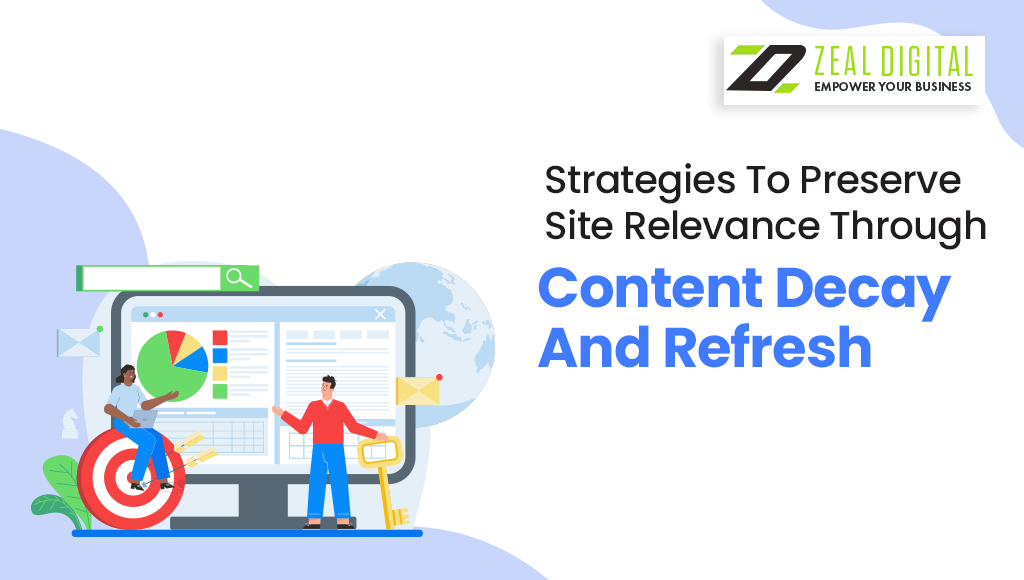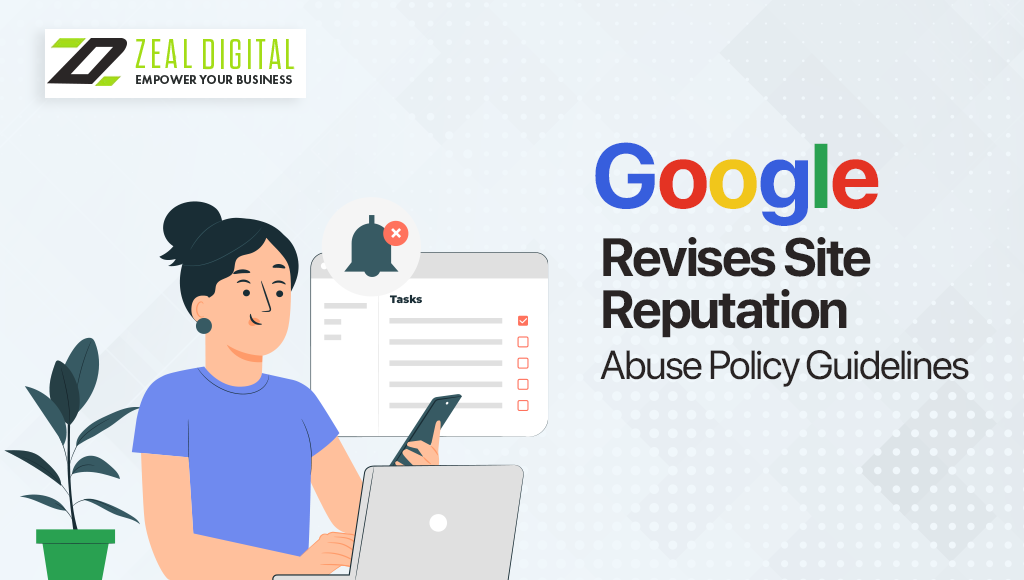Consider spending endless hours creating a blog post that receives thousands of views and generates a lot of interaction. But after a few months, the numbers begin to decline. Visitors decline, conversions dip and the content that previously reigned supreme is now buried behind an avalanche of fresher, more relevant stuff. In the digital era, this phenomenon – also referred to as content decay – is an unavoidable problem.
The good news is that content doesn’t have to become obsolete. You can revitalise and update outdated information using the correct techniques, guaranteeing that it will continue to benefit your audience and improve the functionality of your website. We’ll look at practical ways to maintain site relevancy and maintain a strong online presence in this blog.
What is Content Decay?
The slow deterioration of online content that results in fewer page views, lower search engine ranks and decreased engagement is known as content decay. This occurs when content ages, loses its relevance or is overtaken by products from rival companies. Typical causes of content deterioration include:
- Changing Industry Trends: Your target audience may no longer be interested in topics that were popular a while ago.
- Outdated Information: Over time, facts, figures and procedures may become outdated.
- New Competition: Your current pages may be outranked by rivals who post more thorough or superior content.
- Search Algorithm Updates: Older content that doesn’t adhere to modern SEO criteria may be deprioritised due to modifications in search engine algorithms.
The first step in preventing content deterioration is identifying it. You can determine which sites require maintenance by keeping an eye on performance indicators like organic traffic and bounce rates.
The Importance of Content Refresh
Your website can be revitalised with a proactive content refresh strategy that enhances its authority, relevance and user experience. Here are a few main advantages:
- Improved Search Engine Rankings: Updated material signals to search engines that your site stays active and valuable.
- Enhanced User Engagement: Your audience is kept interested and encouraged to return with fresh, relevant material.
- More Conversion Opportunities: Pages that have been revitalised can better suit the demands of users today, increasing conversions.
- Cost-effectiveness: Compared to producing new content from scratch, updating existing information is usually less expensive and will save you time.
Strategies to Combat Content Decay
Conduct A Comprehensive Content Audit
The first step to addressing content decay is understanding which pages need a refresh. Perform a content audit using analytics tools to identify:
- Pages with declining traffic
- Outdated information
- Content with poor engagement metrics (eg: high bounce rates, low time on page)
- Articles no longer aligned with your business goals
Categorise your findings into actionable segments: update, repurpose, or retire.
Update Outdated Information
Accuracy is crucial for maintaining credibility and relevance. Regularly review your content to:
- Replace old statistics with current data
- Update links to reflect the latest resources
- Revise product or service details to reflect changes in your offerings
For example, if you have a blog on “Top Marketing Trends in 2020,” refreshing it to highlight trends for 2024 can revive its relevance.
Optimise For Current SEO Standards
Search engine optimisation evolves constantly. Revise your older content to align with current best practices:
- Integrate high-performing, relevant keywords
- Ensure proper use of meta tags, headers and alt texts
- Optimise for mobile-friendliness and page speed
These updates can help boost your content’s visibility in search results.
Enhance Content Quality And Depth
Shallow or poorly-written content can quickly lose its appeal. Revamp underperforming pages by:
- Adding new sections or insights
- Including multimedia elements like videos, infographics or high-quality images
- Answering additional user queries related to the topic
This not only improves user experience but also increases the likelihood of gaining backlinks.
Repurpose High-Performing Content
Some content pieces may still resonate with your audience but require a new format to maximise their potential. Consider repurposing:
- Turn a detailed blog post into a video or infographic
- Transform an old case study into a series of social media posts
Repurposing allows you to reach a broader audience without starting from scratch.
Internal Linking
Revisiting and updating your internal linking strategy can boost older content’s relevance. By linking refreshed pages to newer, high-performing content, you create a network that distributes link equity and improves navigation for users.
Leverage User Feedback
Your audience can be an invaluable source of insight for content improvements. Monitor comments, reviews, testimonials and surveys to:
- Identify gaps in your existing content
- Address common questions or concerns
- Incorporate suggestions for better engagement
By directly addressing user needs, you ensure your content remains valuable.
Capitalise On Emerging Trends
Incorporate new developments into your content to establish your site as an authoritative resource. Tools like Google Trends and social listening platforms can help identify what’s capturing your audience’s attention.
Measuring The Impact Of Content Refresh
Refreshing content isn’t a one-time fix. To ensure your efforts are effective, track performance metrics over time:
- Organic Traffic: Are visitors returning to your refreshed pages?
- Engagement Metrics: Is time spent on page increasing? Are bounce rates decreasing?
- Conversions: Is your updated content driving more leads or sales?
Regular analysis helps fine-tune your strategies and demonstrates the value of content maintenance.
When To Retire Content
Not all content is worth saving. Some pages may be beyond rescue due to irrelevance or poor quality. In such cases, consider retiring content that:
- Offers little value to users or your business
- Cannot be updated or repurposed effectively
- Fails to generate traffic or engagement
Redirect retired URLs to more relevant pages to preserve link equity and prevent broken links.
Consistency Is Key
Combatting content decay and ensuring regular refreshes requires a consistent approach. Schedule routine audits, set reminders for seasonal updates, and make content maintenance a priority in your digital marketing strategy.
Bottom-line
By adopting these practices, you’ll ensure that your website remains relevant, authoritative and engaging, no matter how much time passes.
As you continue to refine your strategy, remember that the right mix of effort, tools and creativity can turn even the most outdated content into a powerful asset. And for businesses seeking professional guidance, professional website and SEO services can provide the expertise needed to stay ahead of the competition.
FAQs
How Do I Identify Content That Needs A Refresh?
Conduct a content audit using analytics tools to find pages with declining traffic, high bounce rates or outdated information. Look for content that no longer aligns with your business goals or fails to engage users effectively. Categorise these pages into those that can be updated, repurposed or retired.
What Are Some Strategies To Refresh Outdated Content?
Refreshing content can involve updating outdated information, optimising for current SEO standards, enhancing quality with multimedia elements and repurposing it into new formats like videos or infographics. Regularly adding new sections or addressing user queries can also significantly improve engagement and relevance.
How Often Should I Refresh My Website’s Content?
The frequency of refreshing content depends on your industry and content type. However, conducting quarterly audits and updating high-priority pages, such as those with significant traffic or strategic value, ensures your website remains relevant and competitive.
What Metrics Should I Track To Measure The Success Of A Content Refresh?
To evaluate the impact of a content refresh, monitor key metrics such as organic traffic, engagement metrics (eg time on page and bounce rates), and conversions. Regularly reviewing these metrics helps you refine your strategy and demonstrates the value of maintaining updated content.





